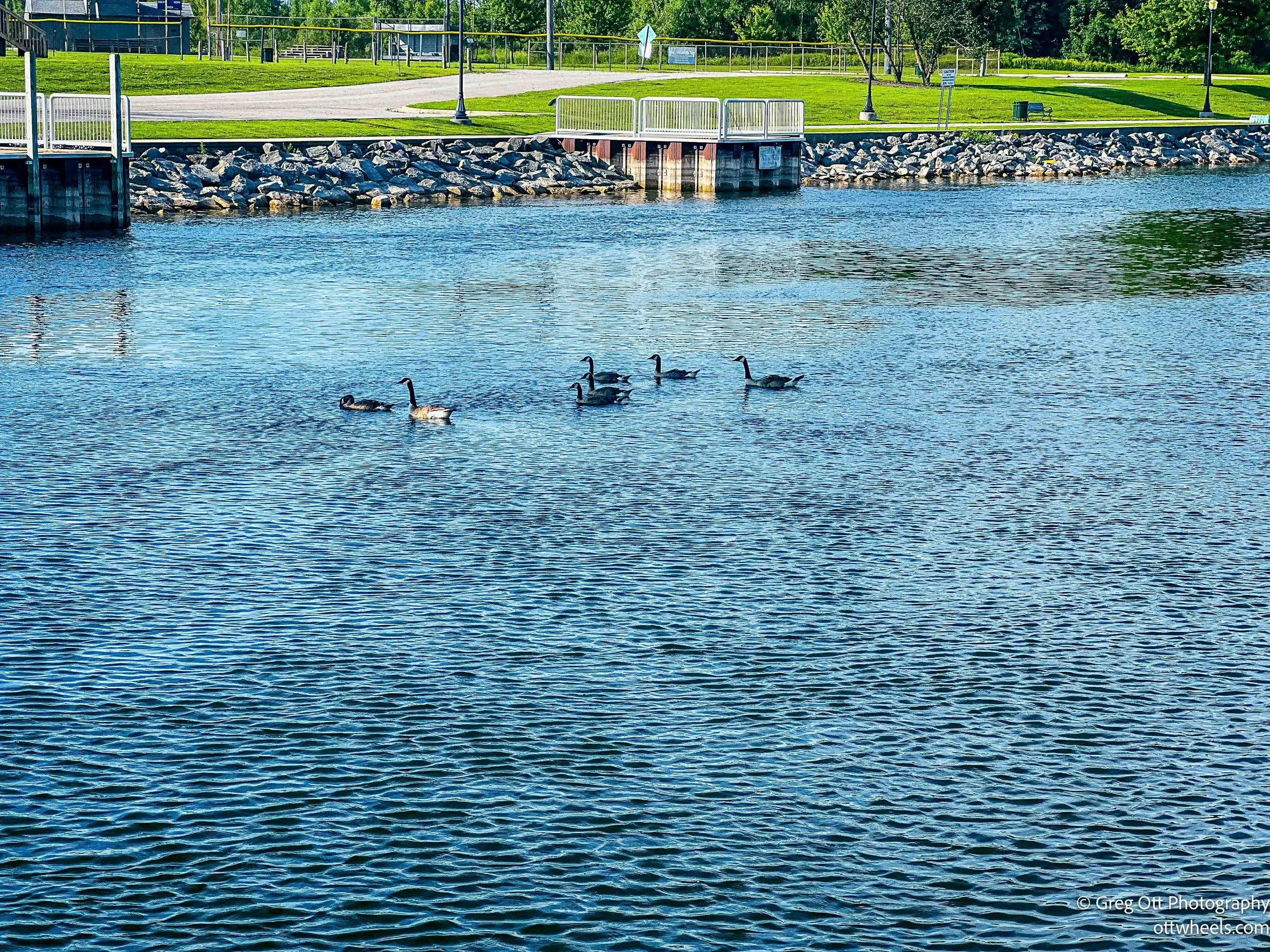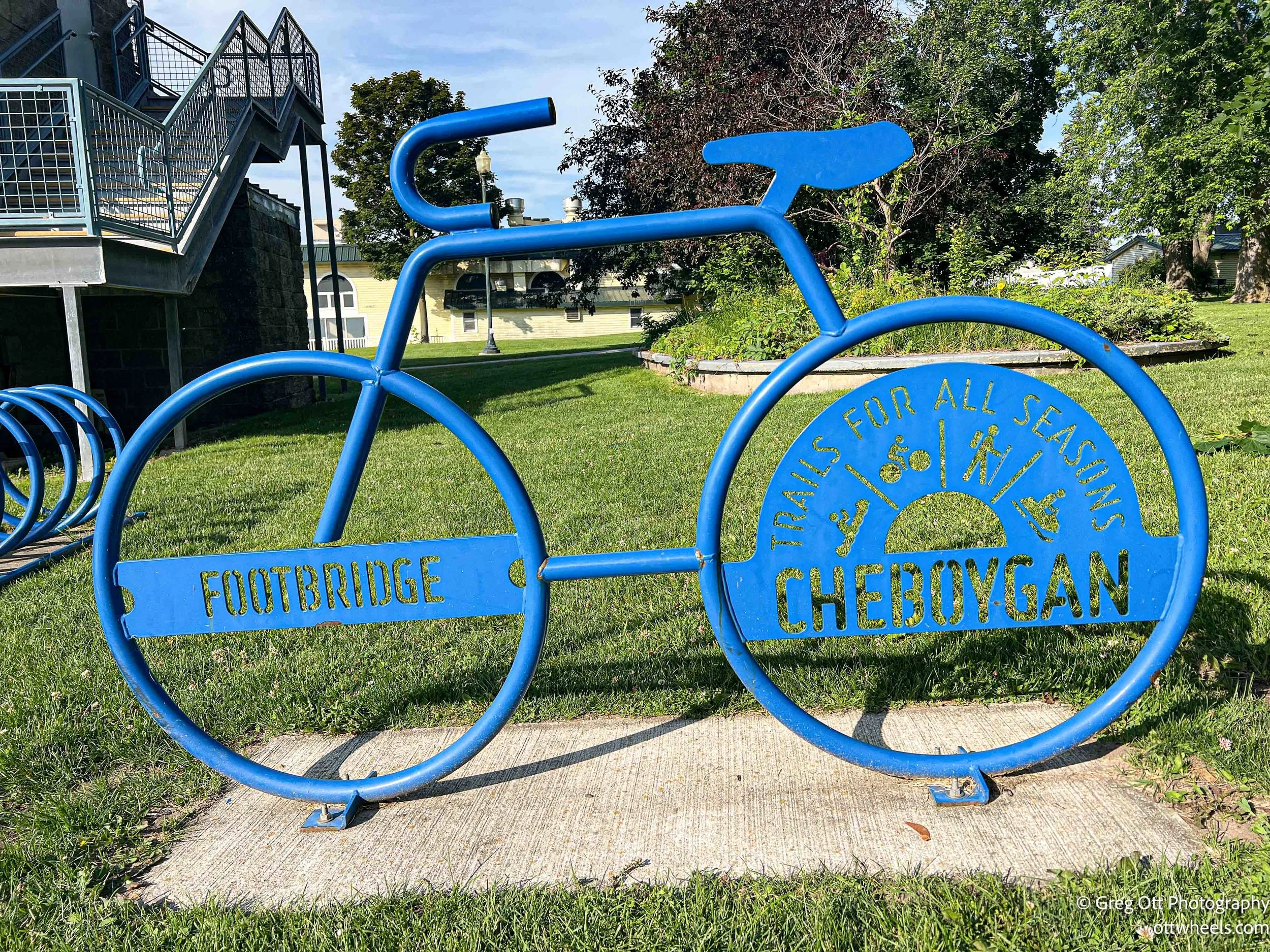Cut River Bridge and Trails
I left the Walmart parking lot in Cheboygan around 9 a.m. I’d actually slept pretty well, but staying up late waiting for fireworks that never happened — then trying to find a place to stay — took its toll. It was close to 2 a.m. when I finally drifted off.
The Walmart was in the cute little town of Cheboygan, MI. I like the way the town name sounds. The town has a very long Main Street, with the Cheboygan River flowing on the east side. There are parks on either side of the river, and boats were moored along the waterway. I stopped to take a few photos and admire how tidy everything looked.
I went back to the lighthouse in Mackinaw City to make breakfast and plan my day. After that, I headed for the Cut River Bridge. I’d heard the underside was worth seeing and there were trails and a beach nearby. I crossed the Mackinac Bridge around noon. From the signs, I thought the toll would be $20 for my van — it turned out to be only $5.
The Mackinac Bridge, sometimes called the “Mighty Mac,” is a suspension bridge spanning about 5 miles, connecting Michigan’s Lower and Upper Peninsulas. Opened in 1957, it remains one of the longest suspension bridges in the Western Hemisphere. It was built to replace the seasonal ferries that used to run cars across the Straits of Mackinac, transforming travel and commerce in the region.
I was below half a tank of gas when I reached the other side of the bridge. My rule is to fill up when I dip below 1/2 a tank, but all the gas stations had long lines. So, I just kept driving to Cut River Bridge.
Google led me to the west side of the bridge, but both park entrances are actually on the east side — I didn’t even notice there was an entrance where I landed. I turned around and lucked into the only remaining spot in a very small parking lot. There’s actually a larger parking lot across the street with public restrooms if you visit.
The Cut River Bridge is a beautiful cantilevered steel bridge built in 1947, carrying US-2 over the Cut River Valley. Its unique design leaves the steelwork exposed beneath, creating an almost architectural showcase underneath. It’s one of only a few cantilevered bridges left in Michigan and is sometimes called “the million-dollar bridge over a two-bit creek.” The intricate steelwork was made to be seen — both a practical crossing and an unexpected hidden gem for hikers below.
There’s a series of very long steps that meander down the hill to the Cut River. You can wander several trails below or head straight to the Lake Michigan shoreline about a hundred yards away.
I spent some time hiking around, taking photos, and just soaking in the scenery. Then came the long trek back up those steps. Back at the van, I drove across the street and noticed some handy trash cans. I cleared out a lot of trash from the van, vacuumed, and put things back in place — a constant struggle when living in a smaller space.
As I cleaned, I had to be careful to keep everything shut tight. The mosquitoes and tiny flies sneak in immediately if you leave a door open too long. I spent about 20 minutes chasing out the little bugs that did manage to get inside.
Before leaving the bridge, I checked several apps for boondocking options and found about five spots that looked good, mostly in the national forest. While I was driving, I passed Kewadin Casinos and noticed a few campers parked in the grass, with more parked further back on the gravel — even a couple of tractor trailers were there. I turned around to check it out and found online that if I didn’t need electricity, I could park there for free. If you did want electricity, it was $25 or $35 depending on whether you wanted a 20A or 30A hookup. There were plenty of open spots in the back on the gravel, so I settled in for the night.
It poured rain most of the night, which was soothing, and the location was really quiet — not a bad place to end the day.












